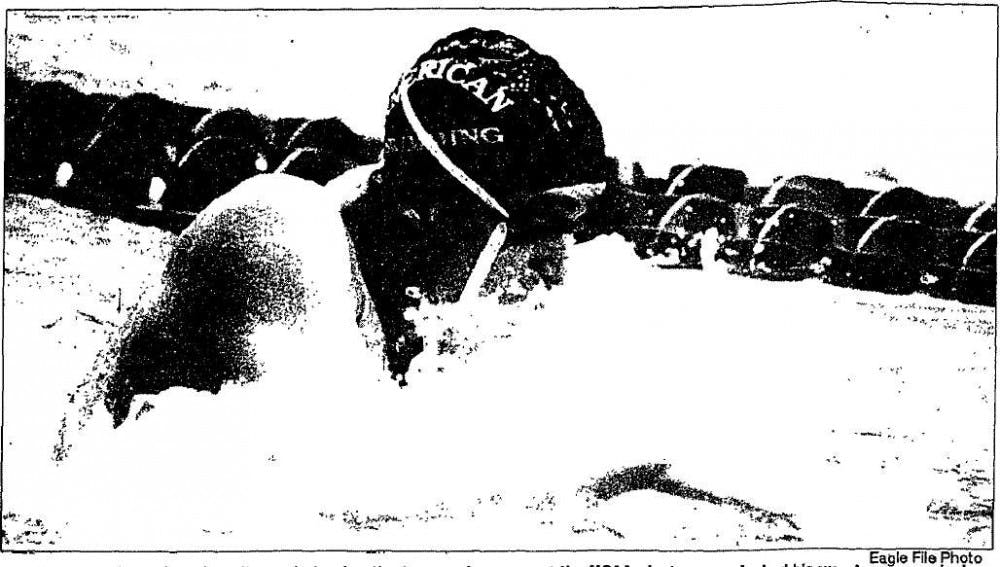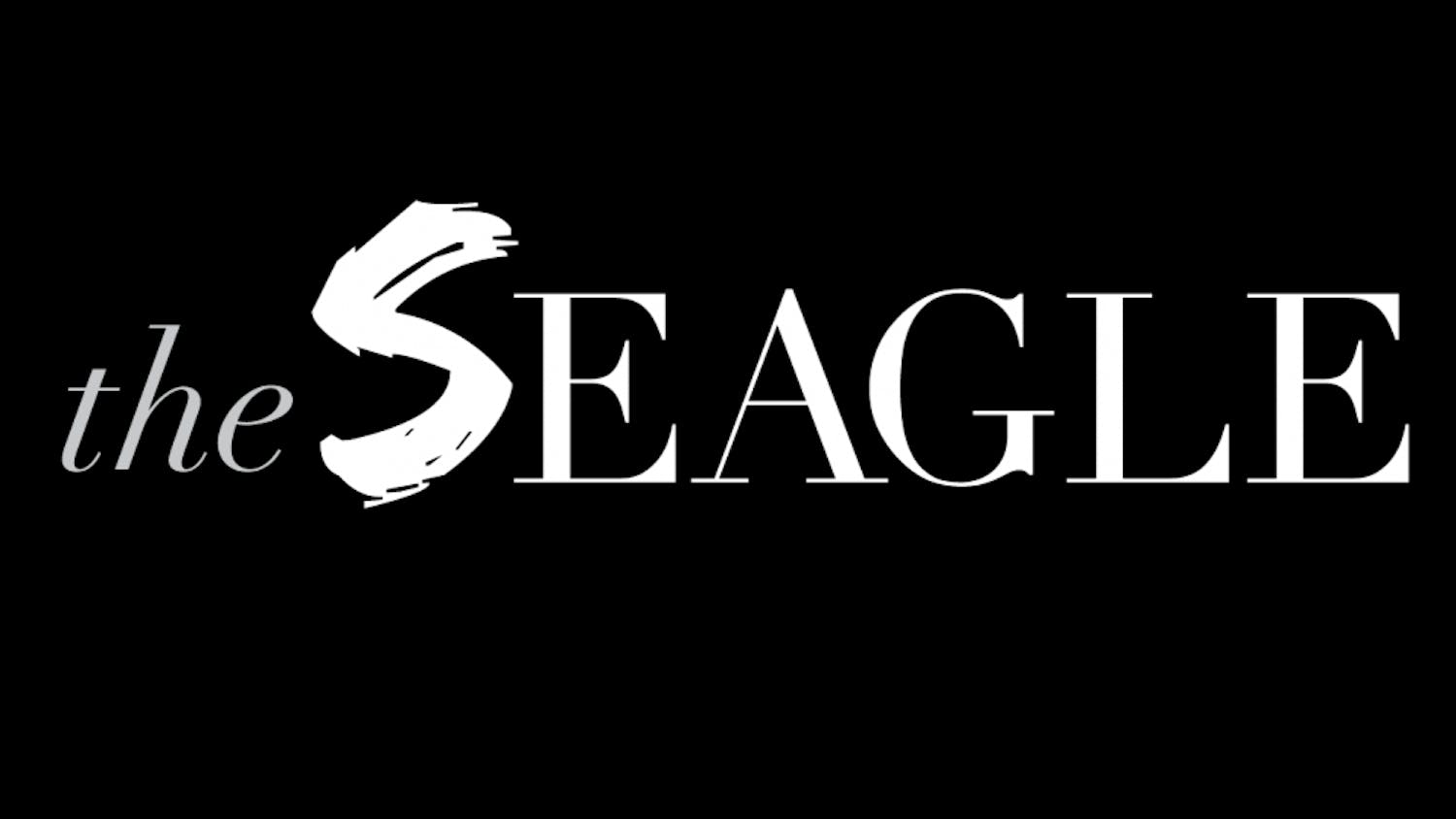AU senior swimmer Caylee Watson made history on August 7 as she jumped in the water at the Olympics Aquatics Stadium in Rio and competed for her native U.S. Virgin Islands in the women’s 100 meter backstroke. When she qualified for the Olympics back in January, Watson became the seventh AU student to swim in the Olympic Games, joining the likes of gold medalist Shelley Mann, bronze medalist Sergio Lopez, two-time Olympians Fred Hviid and Gabriella Csepe and competitors Chris Hauth and Casey Legler. In honor of Watson's accomplishment and AU’s history of success in the pool, The Eagle took a look back at the previous Olympians, their careers and their performances on the world’s largest stage.
Shelly Mann, USA, 1956:
Shelley Mann became AU’s first Olympic swimmer when she qualified for the Melbourne Olympics in 1956. Born with polio, Mann seemed like one of the least likely people to become the first Olympic athlete for her school in D.C., but she overcame the childhood experience of nearly drowning and became a champion in the pool and in life.
A Virginia native, Mann swam for the Walter Reed Swim Club and started setting records at the age of 15. She claimed several national championship titles in the early 1950s and went on to win the gold medal in the 100 meter butterfly in the Olympics as well as the silver medal in the women’s 4x100 freestyle relay. She also competed in the women’s 100 meter freestyle in the Melbourne Games. In 1966, Shelley was inducted into the International Swimming Hall of Fame, and in 1984, she became a member of the Virginia Sports Hall of Fame.
For film of Shelby competing in a 1956 AAU meet, click here.
Sergio Lopez, Spain, 1988, 1992:
When Sergio Lopez stepped foot on campus in 1989, he came to the District with a bronze medal already to his name and the experience of having just competed in the 1988 Olympics in Barcelona just one year prior. A transfer from Indiana University, Lopez switched schools to follow his coach, Joseph Nagy, and to give himself a change of environment.
“I don’t care about swimming for big teams,” Lopez told The Eagle in April 1991. “I get along with all the people here. They’re nice people.”
On Sept. 18, 1989, The Eagle announced Lopez’s arrival to campus with the headline “Olympic medalist swimming for AU,” and the Spanish star immediately made waves in Fraily Pool, breaking a record in his first swim ever as an Eagle in the 100 breaststroke. Four days later, in what then-head coach Doug Backlund called “one of the more important meets in AU history,” Lopez helped his team defeat the defending conference champ East Carolina University in a dual meet 138-105. Keeping up with his record-breaking style, Lopez broke the school and conference record in the 200 freestyle against the Pirates. As the fall season got underway, Backlund told The Eagle that “without question, he’s the best swimmer in the school’s history, probably the best athlete in the school’s history.”
On November 20 of that same year, The Eagle reported that Lopez earned his NCAA qualifying time in the 200 breaststroke, becoming the first swimmer in school history to earn a bid to the national meet.
Before the Olympics in 1992, comparisons started spouting among his coaches between Lopez and Mark Spitz, the swimmer who won seven gold medals in the Munich Olympics in 1972. Despite his success in 1988 and at AU, Lopez walked away without a medal in the 1992 Games, finishing fourth in the 200 breaststroke, but the legacy he left at AU was not forgotten.
In 2001, Lopez was inducted into the Hall of Fame at AU, a testament to his success at the conference level and in the records books. Watch a video interview here with Lopez at the 2016 Olympic Trials after his swimmer, Kevin Cordes, qualified for the Olympics.
Gabriella Csepe, Hungary, 1988, 1992
At just 15-years-old, Gabriella Csepe swam in her first Olympic Games, representing Hungary in 1988 while future AU teammate Sergio Lopez swam for Spain at the same venue. Three years after finishing 14th in the women’s 100 breaststroke, Csepe matriculated at AU to the excitement of head coach Backlund, AU alumni and sports fans. She immediately cemented herself in the record books after breaking two records in a Metro Championship meet in late October.
“Gabriella’s performance was a welcome addition to the team, and we expect her to do great things,” then assistant coach John Matson told The Eagle on Oct. 28, 1991.
Much like Lopez, Csepe continued to break records throughout her first season, taking down the top 200 IM record while swimming against Drexel University and besting the 200 free and 100 breast records against William and Mary. The Eagle reported on Nov. 11 of the same year that Csepe came to AU under the guidance of Nagy, the Hungarian coach who advised Lopez.
“He’s a great breaststroke coach and he’s also from my country,” Csepe told The Eagle in 1991.
At her conference meet debut, Csepe started out in style, winning three events, helping the women win their second title and individually qualifying for the NCAA Championships in the 200 breaststroke, Lopez’s event. She continued her successful streaking throughout her career, qualifying for the 1992 Olympics, finishing sixth and ninth in the 100 and 200 breaststroke, respectively, and she also set three national records. Back at AU, Csepe racked up honors as well, capturing the 1994 CAA Outstanding Performer of the Season when she won two events and helped her team relay to a win as well. In her first meet as a senior, she won the 200 IM and the 200 fly and earned praise from her coach as “a leader through her performances.” During her career as an Eagle, she won 12 CAA titles and set 11 AU records.
Fred Hviid, Spain, 1996, 2000:
In April 1996, the Eagle announced that Frederik Hviid, a native of the Canary Islands, became the third AU swimmer to qualify for the Olympic Games. Hviid won two events at the Spanish Olympic Trials at the end of February, and finished ninth in the Games. In 2006, ten years after Hviid’s first Olympic appearance, the AU swimming media guide described the Spanish superstar as “arguably the most successful swimmer in AU history.”
Hviid joined the team in 1992, after Lopez’s graduation, so naturally the comparisons began. The Eagle argued that Hviid wasn’t quite at Lopez’s level and assistant coach Matson agreed.
“Hviid is a very good swimmer, and two or three years down the road might be in that league, but not at this point,” Matson told the Eagle in Feb. 1992, yet, one month later Hviid just narrowly missed Lopez’s record by .5 in the 200 IM.
Hviid said Lopez, the only other male swimmer at AU to make the Olympics at that time, was a mentor and role model for him and played a role in getting him to AU.
“American offered me the perfect opportunity to study in a good university in one of the most cosmopolitan and influential cities in the world,” Hviid told The Eagle in an email last week. “It also helped that at the time I would get the opportunity to train with legendary coach József Nagy alongside the top three breaststrokers in the world (Mike Barrowman, Sergio Lopez and Rogue Santos) on the Curl-Burke swim club (now NCAP).”
By the end of his AU career, Hviid followed in the footsteps of the Lopez, etching his name in the record books, earning a second Olympic bid and become an All-American at the NCAA Championships. Over the course of his career, Hviid also claimed 45 Spanish National Championships and eight conference championships. In the 2000 Olympics, despite fighting a sickness, Hviid finished 12th in the 1500 free and 15th in the 400 IM. He said he hopes Watson, the Eagles’ 2016 Olympian, enjoyed the thrill of the Games and took pride in her achievement.
“As I write this she has also swam her 100 back and placed 30th which is a tremendous achievement,” Hviid said in an email. “Take in the experience and the attention. It only comes every 4 years.”
Click here for a video of Hviid swimming in the 1996 Olympics.
Chris Hauth, Germany, 1996:
A native of Germany, Hauth came to the U.S. one year before college to help himself acclimate to American culture and attend school in Tenafly, New Jersey. After being recruited heavily by head coach Backlund and his team of coaches, Hauth enrolled at the school and started breaking records.
“There was also an assistant coach that was joining, and he was all I needed to swing me to AU - Josef Nagy,” Hauth said in an email, echoing the responses given by many of his Olympic teammates when talking about swimming at AU. “At the time he was quite well known in the swimming world as a renown breaststroke coach: tough, Eastern European. I was intrigued to learn from him and see what he could do for my 400IM. He - to this day - has had a huge influence on my coaching.”
Hauth found great success at the conference level, winning ten individual titles throughout his career and helping the team capture the crown in 1990. In 1991, he earned the description as “AU’s next-best thing to established world class swimmer and teammates Sergio Lopez,” a description that his coach echoed when he called him “the second best thing next to Sergio on the team.” But despite his comparisons to the Spaniard, Hauth paved his own way, winning conference titles in the 200 and 400 IM that same year.
In 1992, he broke a pool record previously held by Mark Spitz from 1972 in a time of 1:50.10, set a school and conference record in the 400 IM, and won earned Outstanding Performer of the Meet. Hauth earned more conference accolades the following year, capturing wins in the 500 free and 400 IM, demonstrating his versatility, and also winning the CAA swimmer of the year award. In his four years at AU, he won the 400 IM conference title every year, notched Male Swimmer of the Year honors twice and qualified for the 1996 Olympic Games.
Since leaving AU, Hauth has become a professional triathlete and coach, and in 2015, he competed in the Ironman World Championships.
Casey Legler, France, 1996:
Search “Casey Legler” on Google and information about her swimming career comes near the bottom of the page. The now-famous Ford model has found exceptional success outside of the pool, but before she was an international sensation and gender activist, Legler left her mark on the AU history books and at the Olympic Games.
In 1996, Legler competed in the 50 freestyle and the 4x100 freestyle relay at the 1996 Atlanta Games, finishing 29th and 10th respectively. Before the Games, Legler competed for the University of Arizona, but transferred to AU, and, under head coach Mark Davin, won the conference championships in 1999. She also set school records in the 50 and 100 freestyle and became a 1999 Academic All-American.




